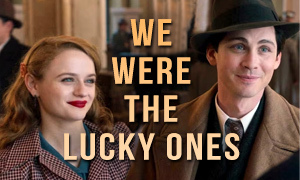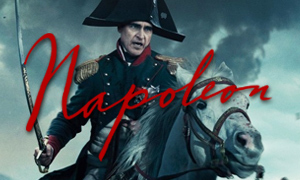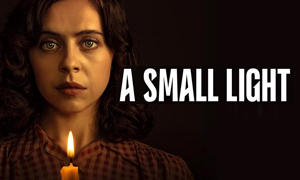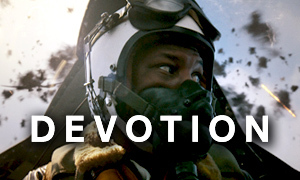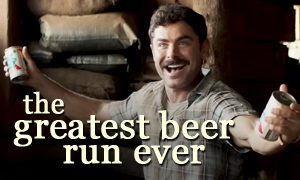The Ministry of Ungentlemanly Warfare vs. the True Story of Operation Postmaster
Henry Cavill
Born: May 5, 1983
Birthplace:
Jersey, Channel Islands
Gus March-Phillips
Born: 1908
Birthplace: England, UK
Death: September 12, 1942, Sainte-Honorine-des-Pertes, France (shot during Operation Aquatint)
Alan Ritchson
Born: November 28, 1982
Birthplace:
Grand Forks, North Dakota, USA
Anders Lassen
Born: September 22, 1920
Birthplace: Høvdingsgård, Mern, Denmark
Death: April 9, 1945, Lake Comacchio, Italy (mortally wounded by spandau fire during Operation Roast)
Alex Pettyfer
Born: April 10, 1990
Birthplace:
Stevenage, Hertfordshire, England, UK
Geoffrey Appleyard
Born: December 20, 1916
Birthplace: Bramley, Leeds, West Yorkshire, England
Death: July 13, 1943, Near Sicily, Italy (plane crash during Operation Chestnut)
Eiza González
Born: January 30, 1990
Birthplace:
Mexico City, Distrito Federal, Mexico
Marjorie Stewart
Birthplace: UK
Bio: SOE Operative | Actress | Married Gus March-Phillips
Hero Fiennes Tiffin
Born: November 6, 1997
Birthplace:
London, England, UK
Graham Hayes
Born: July 9, 1914
Birthplace: UK
Death: July 13, 1943, Fresnes Prison, near Paris, France (executed by German firing squad)
Renamed Henry Hayes in the movie
Cary Elwes
Born: October 26, 1962
Birthplace:
London, England, UK
Colin 'M' Gubbins
Born: July 2, 1896
Birthplace: Tokyo, Japan
Death: February 11, 1976, Stornoway, Lewis, Scotland
Freddie Fox
Born: April 5, 1989
Birthplace:
London, England, UK
Ian Fleming
Born: May 28, 1908
Birthplace: Mayfair, London, England, UK
Death: August 12, 1964, Canterbury, Kent, England, UK
Bio: Assistant to the Director of Naval Intelligence | James Bond Author
Is the covert British organization in the The Ministry of Ungentlemanly Warfare based on an actual group of soldiers?
Yes. The covert organization in the movie is loosely based on the true story of the British Army's No. 62 Commando, also known as the Small Scale Raiding Force (SSRF), which was founded by Major Gus March-Phillips (portrayed by Henry Cavill in the film). Despite the movie making it seem like the SSRF only conducted one mission, Operation Postmaster, they actually conducted several missions, with Postmaster being their first. The covert unit was part of the Special Operations Executive (SOE), which was established in 1940 by Prime Minister Winston Churchill to carry out sabotage, espionage and reconnaissance missions in Nazi-occupied Europe. SOE operators utilized unconventional tactics (irregular warfare) and laid the foundation for modern Black Ops warfare, including the British SAS.
During its five-and-a-half years in existence, from July 22, 1940 to January 15, 1946, the SOE consisted of more than 13,000 people who either worked directly for the organization or were controlled by it. Approximately 3,200 were women. Some of the SOE's hundreds of missions included Operation Harling and Operation Anthropoid, the latter of which found Czech soldiers-in-exile assassinating a high-ranking Nazi named Reinhard Heydrich. That story was told in the 2016 film Anthropoid starring Cillian Murphy and Jamie Dornan.
Is The Ministry of Ungentlemanly Warfare based on a book?
Yes. The movie is based on Damien Lewis' 2014 book Churchill's Secret Warriors: The Explosive True Story of the Special Forces Desperados of World War II, which is based on Britain's covert unit known as the Special Operations Executive (SOE) that conducted operations during WWII. Guy Ritchie's amped-up depiction of one of the SOE's operations also draws on files from the British War Department that, according to the AP, were declassified in 2016.
Does the The Ministry of Ungentlemanly Warfare depict a real operation?
A fact-check reveals that the movie depicts a heavily fictionalized account of Operation Postmaster, carried out by the Small Scale Raiding Force and the Special Operations Executive on January 14, 1942 in the harbor of Santa Isabel on the West African island of Fernando Po, then a Spanish colony in the Gulf of Guinea. Led by Major Gus March-Phillips (represented by Henry Cavill in the movie), the aim of the secret mission was to sail to Fernando Po and capture three German and Italian ships in the harbor that were being used in the Axis war effort and sail them to Lagos, Nigeria. The ships included the Italian merchant vessel Duchessa d'Aosta (pictured below), the German tug Likomba, and the luxury pleasure yacht Bibundi. At the time, Spain was neutral in the war, which made the covert British operation a bold endeavor.
How closely is Henry Cavill's character based on the real Gus March-Phillips?
While watching this Guy Ritchie WW2 movie, it quickly became clear to me that what I was seeing was far more akin to Inglorious Basterds than Saving Private Ryan, even if I was somewhat hoping for some resemblance of the latter. In an interview with Comicbook.com, Henry Cavill indicated that his character was significantly fictionalized. "There's not a huge amount written about these guys, because they were obviously fairly 'Secret Squirrel' types," said Cavill. "We kind of just created this hyperbolic version of this character to fit into this movie." Gus March-Phillips is portrayed as a sort of Rambo meets James Bond character, harboring the toughness of the former and the quips of the latter. The more I learned about March-Phillips and the other men of the SSRF, the more I felt that this over-the-top retelling didn't quite do them justice.
Did the real Gus March-Phillips inspire James Bond?
Yes. James Bond creator Ian Fleming was the assistant to the Director of Naval Intelligence, Rear Admiral John Godfrey, and acted as a liaison to Churchill's Special Operations Executive (SOE). Fleming, who is portrayed by Freddie Fox in The Ministry of Ungentlemanly Warfare, reportedly based his Bond character on soldier Gus March-Phillips, played by Henry Cavill.
Major Gus March-Phillips was a bit of an author and a poet in his own right. In an interview with Comicbook.com, Cavill said that March-Phillips had even written a book that featured a character who was inspired by his experiences in the SOE. Had he survived WWII, Gus March-Phillips might have even beaten Fleming to the punch of writing a character that was similar to James Bond.
Did Ian Fleming work directly under Brigadier General Colin Gubbins?
No. The Ministry of Ungentlemanly Warfare conveniently places James Bond creator Ian Fleming under the command of General Colin Gubbins. However, as stated above, Fleming was the personal assistant of Real Admiral John Godfrey, not Gubbins. Fleming's brother, Colin, reported more directly to Gubbins and even took part in two Gubbins-directed covert missions in Greece and Norway.
Did Operation Postmaster take a matter of weeks?
No. Similar to the movie, they did set out for West Africa on the 65-ton Brixham yacht trawler Maid of Honour, leaving on August 9, 1941. However, the completion of the operation's objective, stealing the three ships (the Italian merchant vessel Duchessa d'Aosta, the German tug Likomba, and the luxury yacht Bibundi), didn't happen until five months later on January 14, 1942. The movie condenses the timeline and makes it seem like this all only takes a matter of weeks.
Did Anders Lassen use a bow and arrows to fight the Germans?
In the movie, Alan Ritchson's character, Anders Lassen, takes out Nazis with precision using everything from axes to his trusty bow and arrows. According to the film's co-screenwriter, Arash Amel, "[Anders] did show up with a bow and arrow from his hunting days in Denmark. He brought this very primitive way of killing to a very mechanized war." Amel seems to be implying that Lassen used his bow and arrows in combat like in the movie. However, according to Damien Lewis' book, this wasn't the case. Lassen petitioned the War Office to allow bow and arrows to be used in combat, but they rejected his request. Instead, Lassen only used them in training, which is how he acquired the nickname 'the Robin Hood Commando'.
Anders Lassen had been proficient with a bow and arrow from a young age. His interest in archery began when bowhunter Gregers Ahlefeldt-Laurvig-Bille visited the family and taught Anders and his brother Frantz how to make their own bows and arrows. Anders became so good that he could hit birds in the air. He would also sneak up on deer and quietly begin to run. He would then shoot the deer while he was running. His arrows would reportedly pass right through a stag and hit the tree beyond, a detail that the film incorporates when one of his arrows passes through the body of a German soldier and penetrates a tree.
Did they have to rescue Geoffrey Appleyard from a Nazi base?
No. Early in the movie, Gus March-Phillips (Henry Cavill) and his band of unconventional fighters have to rescue fellow soldier Geoffrey Appleyard (Alex Pettyfer) from torture on a Nazi base. To free him, they kill dozens of enemy soldiers in one of the film's bloodiest sequences. There is no mention of this rescue in Damien Lewis' book. Co-screenwriter Arash Amel told USA Today that there was an event that inspired the fictional rescue of Appleyard. However, the real-life event involved no bloodshed. In fact, not a single shot was fired. Four or five soldiers arrived and the Nazis, some of whom were showering, all gave up immediately. Amel says that one even fainted.
Did Anders Lassen rip out an enemy soldier's heart and hold it in his hand?
No. As Collider reported, the scene where Alan Ritchson's character makes his way up a tower to rescue Geoffrey Appleyard (Alex Pettyfer), killing every soldier in his way before he cuts out one of their hearts and holds it in his hand, is purely fictional. Anders Lassen holding a dead German soldier's heart in his hand was the idea of actor Alan Ritchson, who conceived it as a way to convey how much the real Lassen hated Nazis. Ritchson reportedly did his homework on Lassen, reading four books on the highly decorated Danish soldier. The actor also became proficient with a bow and arrow.
Was Anders Lassen nicknamed "The Danish Hammer"?
No. In real life, his nickname was "The Viking."
Is Babs Olusanmokun's character, Mr. Heron, based on a real person?
No. During our research into The Ministry of Ungentlemanly Warfare's true story, we found no evidence that Babs Olusanmokun's character, Richard Heron, is based on a real person. In the film, he is a British secret agent who has established himself as a German-friendly business owner in Fernando Po, operating a casino bar. At best, the character seems to be a replacement for real-life SOE agent Richard Lippett, who helped to prep for Operation Postmaster in Fernando Po, including setting up the party to distract the officers.
Is Henry Golding's character, explosives expert Freddy Alvarez, based on a real person?
No. In the film, Freddy Alvarez (Henry Golding) is one of the five people whom Gus March-Phillipps requests to be part of the mission. Given that the initial plan in the movie is to sink the boats with explosives, it stands to reason that such an expert would be needed.
Did Gus March-Phillips' future wife, Marjorie Stewart, play a role in Operation Postmaster?
The Small Scale Raiding Force (SSRF), which was led by Gus March-Phillips, did not have any female members in 1942 and there is no record of Marjorie Stewart being part of Operation Postmaster. At best, it's possible that she may have interacted to some degree with the unit via the broader Special Operations Executive (SOE), which oversaw the SSRF, but that's purely speculation. Marjorie worked in the SOE first as a lift operator before rising to the role of secretary to SOE Controller Patrick Howarth. She met Gus March-Phillips in January 1942. March-Phillips and Marjorie Stewart married three months after Operation Postmaster, on April 18, 1942. A number of the men from Operation Postmaster attended the wedding, including Anders Lassen, Graham Hayes, Geoffrey Appleyard, and Gubbins 'M'. It's true that Marjorie was an actress. An old news article mentions her starting to perform at age five.
Was Marjorie Stewart Jewish in real life?
During the climax of The Ministry of Ungentlemanly Warfare, Eiza González's character, Marjorie Stewart, is singing at a party thrown to distract the officers. The head Nazi, Heinrich Luhr (Til Schweiger), hears her slip up and say something in Yiddish during her performance, revealing that she's Jewish, not German. As stated earlier, the real Marjorie Stewart was an SOE agent but she did not play an active role in Operation Postmaster, nor is there any evidence she was a skilled markswoman. Her storyline was fictionalized for the movie. In Damien Lewis' book, there is no mention of her being Jewish. She is only briefly mentioned in relation to her marriage to Gus March-Phillips.
Did they plan a party to distract the officers while they stole the ship?
To effectively carry out the real-life mission, an SOE agent planned a party for the officers of the ships in order to distract them while the commandos were overtaking the vessels and making off with them. After subduing the crews, they successfully escaped with two German tugs and the Italian merchant vessel Duchessa d'Aosta.
Were the Nazis really that incapable against Gus March-Phillips and his Small Scale Raiding Force?
No. Sitting in the theater, I began to feel like I was watching somebody play a video game on easy mode. For much of the film, I watched as the main characters casually strolled through each scene, killing Nazis with little fear and the utmost ease. I can't even recall any of our main characters getting hurt until Henry Hayes (Hero Fiennes Tiffin) takes a bullet through the shoulder at the end, which Ritchson's character describes as being a big hole. However, in the concluding scene with Churchill, Hayes appears to be fine, his life meter restored to full. While it's true that these men were highly capable fighters, portraying them as indestructible superheroes is far from realistic. For some scenes I was watching, it wouldn't have been a stretch for Henry Cavill to have just shown up on the screen in his Superman costume. His Ministry of Ungentlemanly Warfare character seemed almost interchangeable with his DC character at times (minus the whole flying thing).
If I've learned anything from my close friends who've been in combat, it's that war looks nothing like this. Even the most trained soldiers during WW2 wouldn't have so nonchalantly killed Nazis as if they were brushing flies off their shoulders. For one, the Nazis were far more capable. With so little risk in every scene, the reward can't help but feel underwhelming, whether it's surviving another skirmish or completing the mission. I imagine that the four commandos represented by the main characters in the film (Gus March-Phillips, Anders Lassen, Geoffrey Appleyard, and Graham Hayes), who all died during or as the result of subsequent WWII operations, would hardly find The Ministry of Ungentlemanly Warfare a fitting tribute to their sacrifice and the sacrifices of their fellow operators. If anything, as I did, they'd find themselves smiling and shaking their heads at the far-fetched ridiculousness of it all while enjoying the movie's comedic tone and exaggerated caricatures. And perhaps, like I did, they'd ultimately find themselves wishing for a movie that better honored their stories and the nerve-racking intensity of such operations.
To learn more about the historical accuracy of the movie's over-the-top combat sequences, watch the History vs. Hollywood episode below from our YouTube channel:
Did Winston Churchill serve the men lobster for completing Operation Postmaster?
No. In the movie, after the members of the Small Scale Raiding Force are arrested for disobeying the admiral's orders to call off the operation, Prime Minister Winston Churchill (Rory Kinnear in plenty of makeup) shows up to congratulate them with a full-course dinner, including lobster. Co-screenwriter Arash Amel told USA Today, "I don't know if he did that or not, but that's exactly the kind of thing Churchill would have done."
Was the unit given the nickname "The Ministry of Ungentlemanly Warfare"?
Yes. In the film's final scene, Prime Minister Winston Churchill bestows a fitting name upon the unit, "The Ministry of Ungentlemanly Warfare". According to author Damien Lewis via USA Today, this was indeed one of the SOE's nicknames. They were also called the Baker Street Boys, The Firm, and The Racket. Some of the nicknames were disparaging since the organization wasn't a military service or an intelligence agency, but rather a shadowy in-between that drew resentment from those who had to still operate by the book. This resentment is conveyed by Admiral Pound (Simon Paisley Day) in the movie.
Did Major Gus March-Phillips, portrayed by Henry Cavill, survive WWII?
No. As indicated in the cast vs. real people section, the leader of the No. 62 Commando (a.k.a. the Small Scale Raiding Force), Major Gus March-Phillips, did not survive World War II. He died on September 12, 1942 during Operation Aquatint, a secret raid conducted by British Commandos on the coast of German-occupied France. During the raid, March-Phillips led a special forces team of 11 men onto a beach using Goatley canoes. They landed in an incorrect area of what later became Omaha Beach along the Normandy Coast near Port-en-Bessin. They were heavily outgunned by a German patrol that happened upon them. An order was yelled to abort the mission and they frantically rushed back to their canoes.
In the moments that followed, four of the men were badly injured and captured by the Germans. Four escaped and were on the run, only to be eventually captured. Three were killed in the melee, including the leader of the Small Scale Raiding Force (SSRF), Major Gus March-Phillips, who was shot when he tried to swim back to the beach after his canoe was too badly damaged to be useful.
Are any members of the real-life SSRF team who were involved in Operation Postmaster not represented in the movie?
Yes. Two members of the real-life Small Scale Raiding Force (SSRF) team involved in Operation Postmaster, Richard Lippett and Leonard Guise, are not directly represented in The Ministry of Ungentlemanly Warfare. As stated earlier, Lippett was transformed into Babs Olusanmokun's character, Richard Heron.
Overall, how accurate is The Ministry of Ungentlemanly Warfare?
While the bones of the real story are present, the Guy Ritchie WWII movie significantly amplifies both the characters and the January 1942 mission known as Operation Postmaster. The film piles up enough dead Nazis to earn a spot on the mantle alongside Quentin Tarantino's Inglorious Basterds, though the latter never claimed to be based on a true story, even if some of its characters were very loosely inspired by real people.
A side effect of cinema's superhero era is that normal heroes are often supersized too. A handful of soldiers slaying hundreds of Nazis is becoming common, and audiences often welcome such grossly exaggerated interpretations of history. I'll admit, this blood-splattered, adrenaline-infused action flick can make for a good time in the theater, but promoting it as "based on" instead of "loosely inspired by" a true story is far from honest. Yet, if the former label causes people to question what they're seeing more and do their own research into the real Operation Postmaster, then maybe it's not entirely a bad thing.


